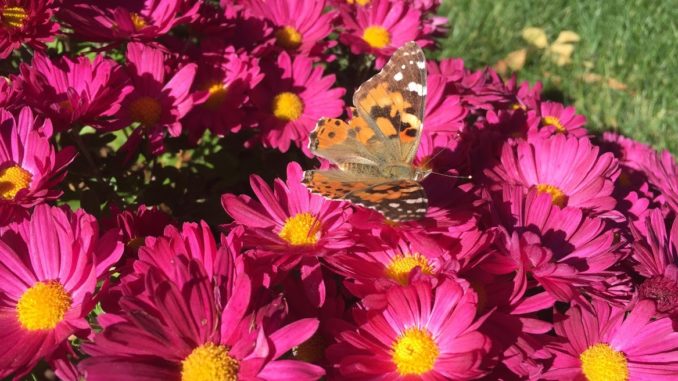

By Jesse Eastman
We generally think of spring – a time of new growth and life – as the time to plant everything including trees & shrubs. However, cooler temperatures make fall an excellent time to plant. The soil is warm after a summer in the sun and many of us actually have more time to devote to planting trees and shrubs in the fall when we aren’t so preoccupied with our annuals and vegetables. Fall is a great time to plant because it gives new plants time to overcome transplant shock without the added demands of producing leaves and flowers, giving them a jump start over anything planted next spring. Nurseries and garden centers often have great deals on end-of-season stock, and many introduce fresh new plants for the fall season.
Trees & Shrubs
- Plant while the soil is still warm (Soil temp. 6″ deep should be above 55 degrees Fahrenheit) to encourage strong root growth and development. Typically, our soil maintains warm temperatures into mid-October, even after the air is much colder.
- Container-grown trees are easier to handle and generally transplant better than bare-root or recently dug balled-and-burlapped stock.
- Keep newly planted trees and shrubs well-watered (but not over-watered) until they drop their leaves, and then water them deeply once a month throughout the winter.
- Young thin-barked trees should be wrapped in late October/early November with a breathable wrap to prevent frost cracks, animal damage, and sunscald. Wrap the trunks with either paper tree wrap or rigid plastic designed for trunk protection that allows for air movement. Remove the wrap no later than early/mid-March. Trees that have developed the coarse craggy bark typically associated with mature trees do not need to be wrapped in the winter.
- Mulch trees with 3-4” wood chips to prevent early soil freezing. Avoid mulch volcanoes (piling mulch directly against the trunk).
Bulbs
Fall bulbs (those varieties planted in fall for spring color) are typically available in early- to mid-September. Tulips, daffodils, iris, narcissus, allium, crocus and more are available in a rainbow of colors. These bulbs can be planted up until the soil freezes, but shop early for the best selection! It is best to plant bulbs early in the fall so that the bulb root has time to get established, prior to the ground freezing, but not too early – wait until daytime temperatures are holding steadily at or below the mid-60s to prevent them from sprouting prematurely in the fall. Bulbs prefer sandy or clay loam soil. In general, bulbs should be planted at a depth of three to four times the diameter of the bulb. If planting in sandy soil, plant two inches deeper. Small crocus bulbs should be planted at a more shallow depth; large allium or daffodil bulbs should be planted deeper. For winter interest indoors, amaryllis and paperwhite bulbs can be forced to bloom in the winter months.
Support Northern Colorado Journalism
Show your support for North Forty News by helping us produce more content. It's a kind and simple gesture that will help us continue to bring more content to you.
BONUS - Donors get a link in their receipt to sign up for our once-per-week instant text messaging alert. Get your e-copy of North Forty News the moment it is released!
Click to Donate
